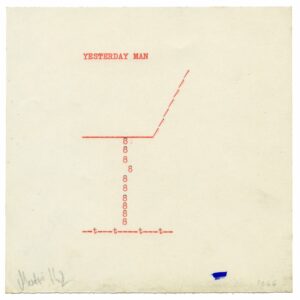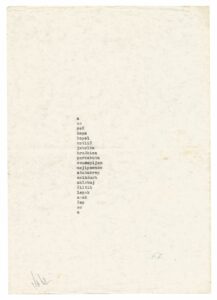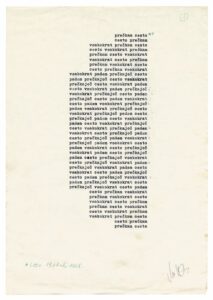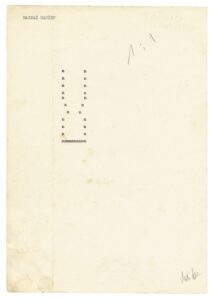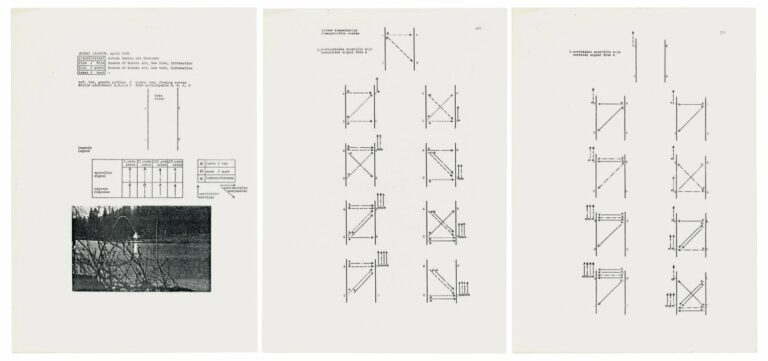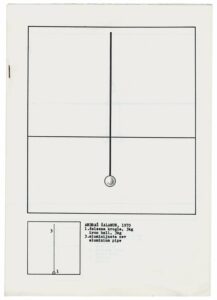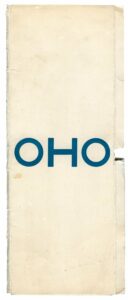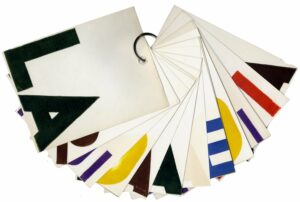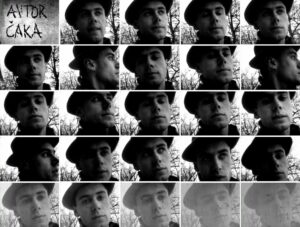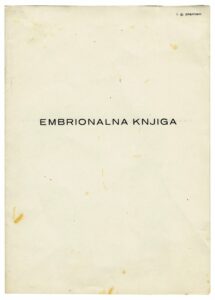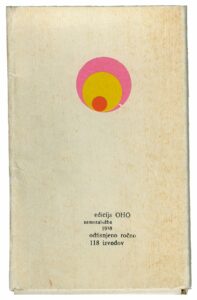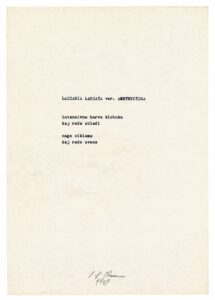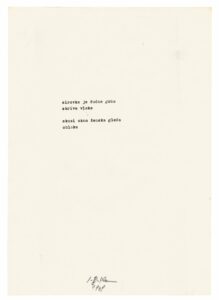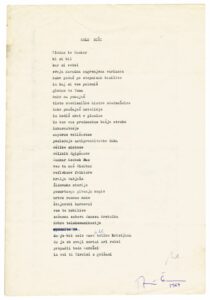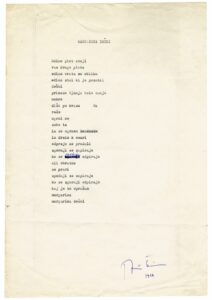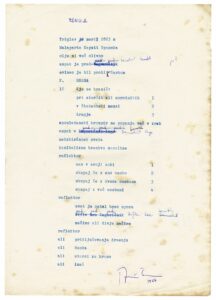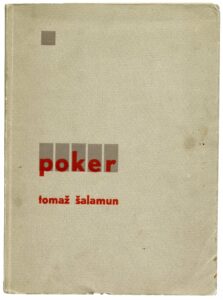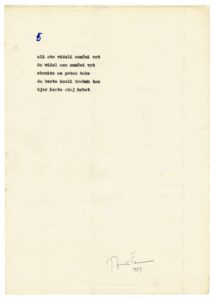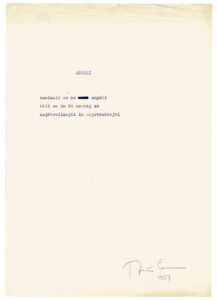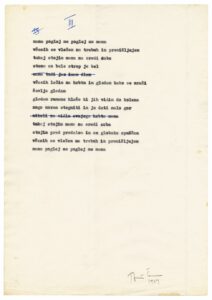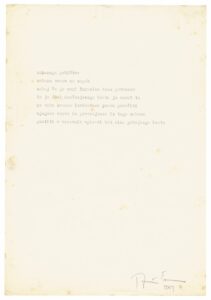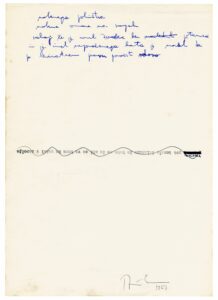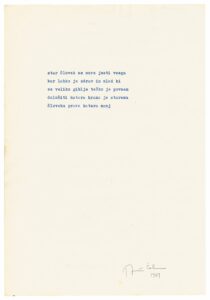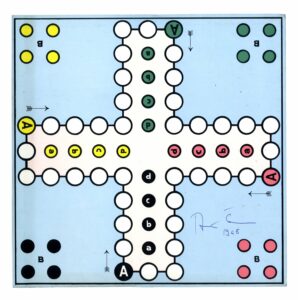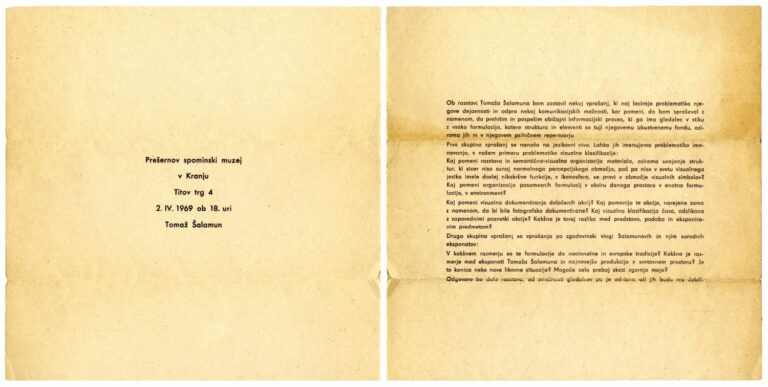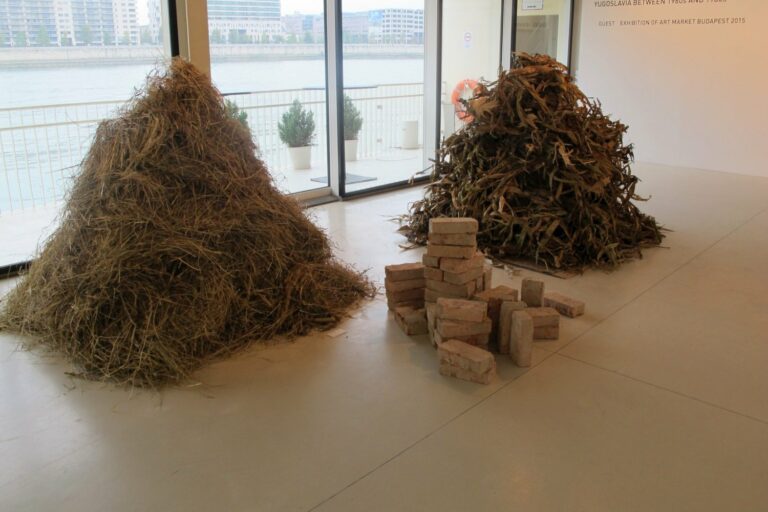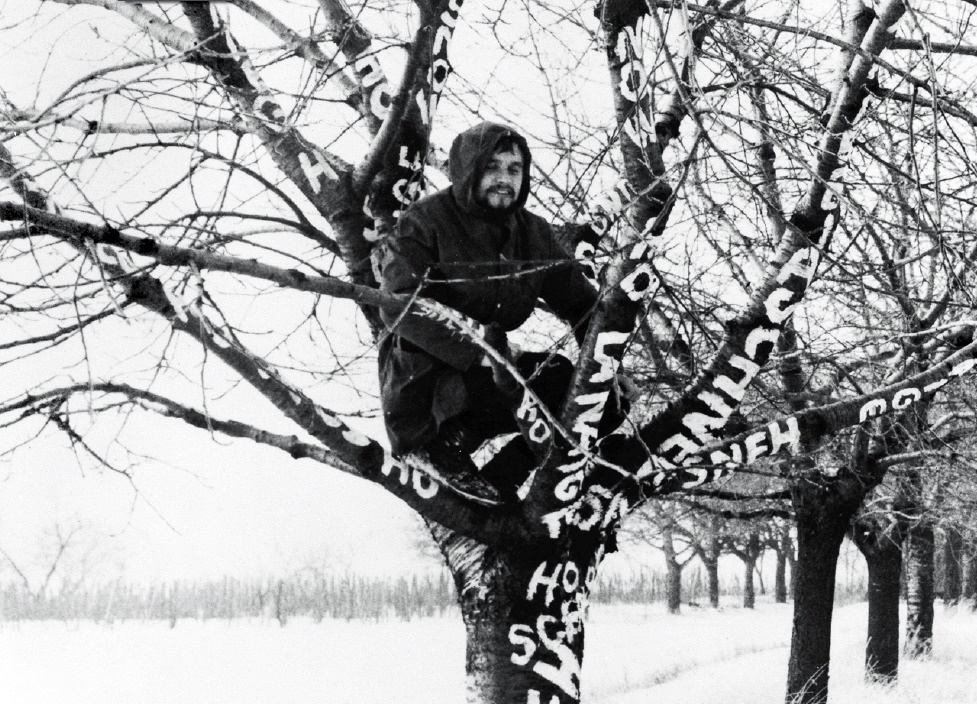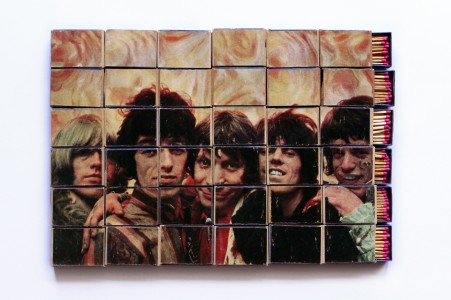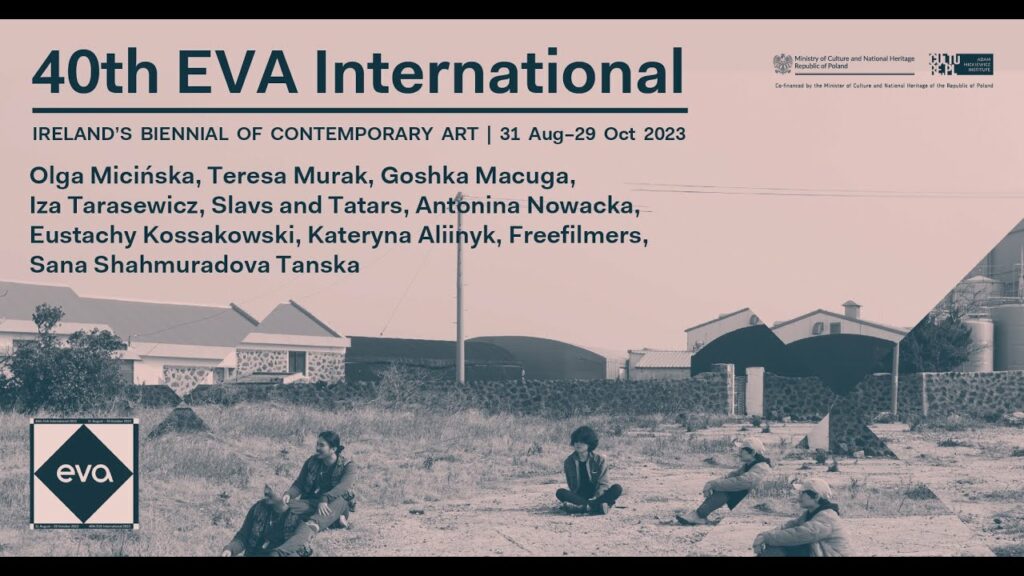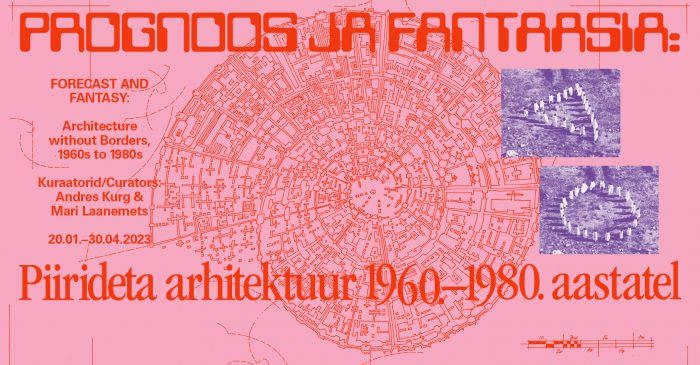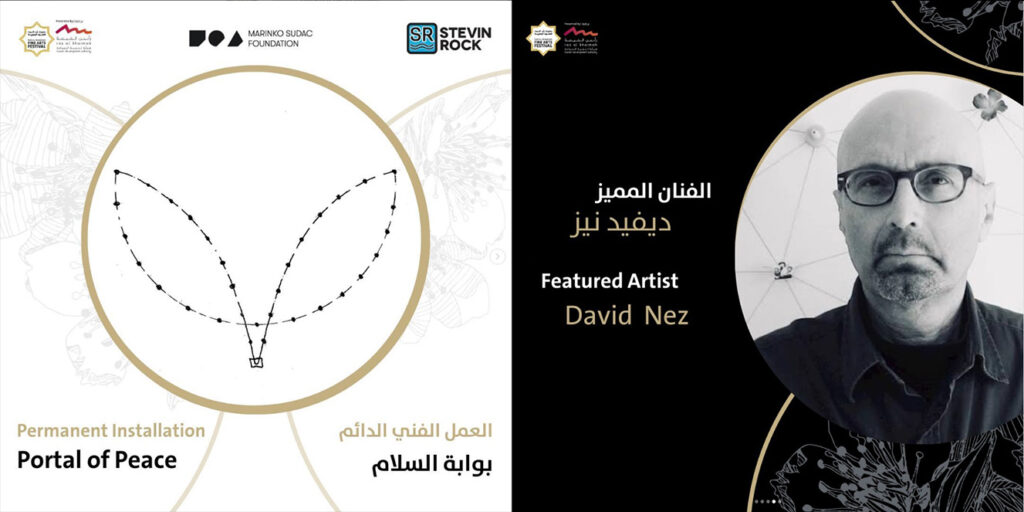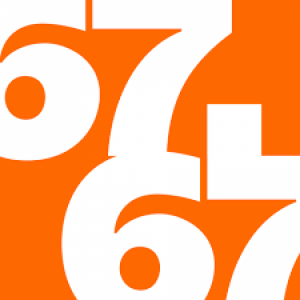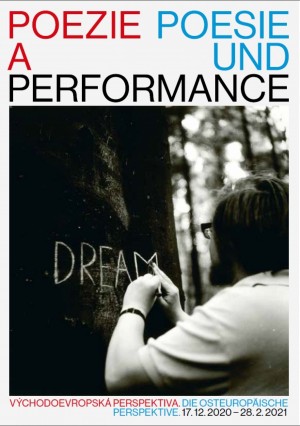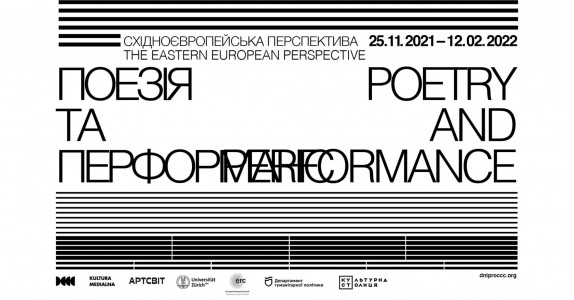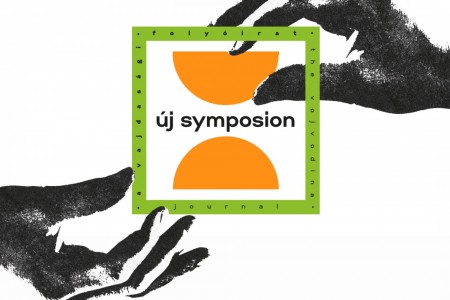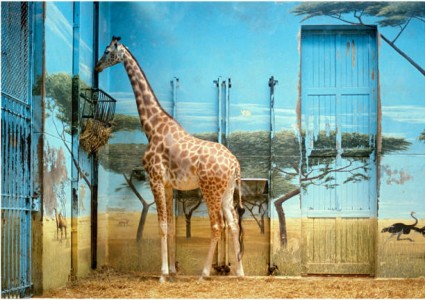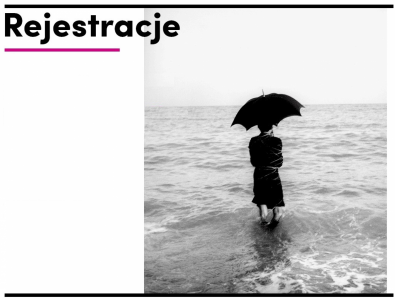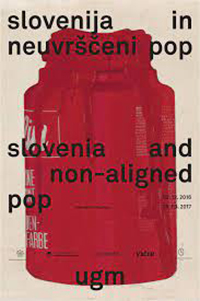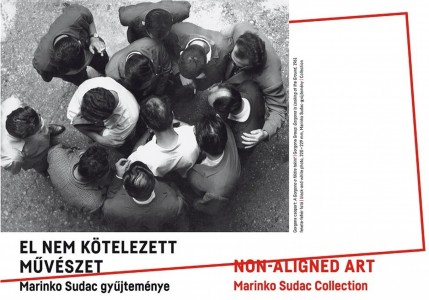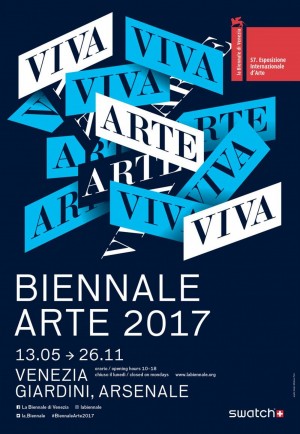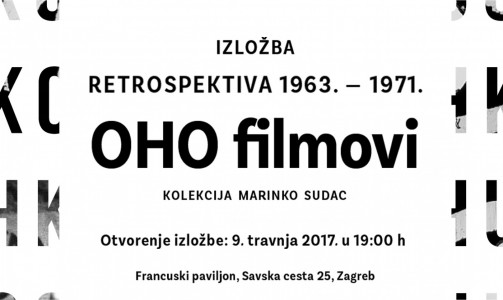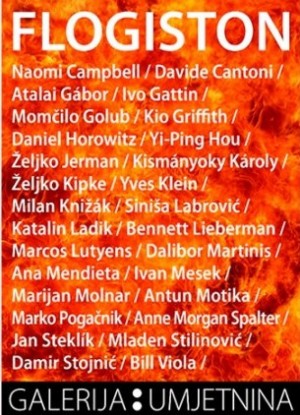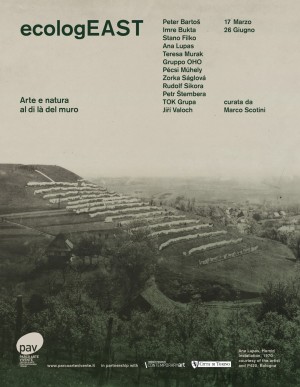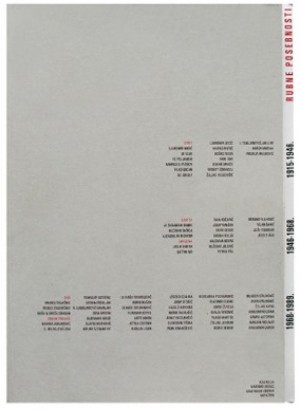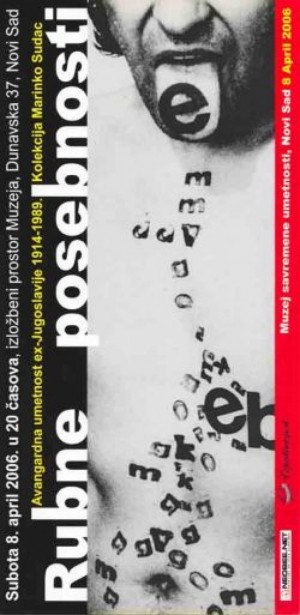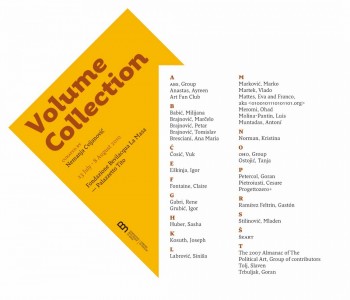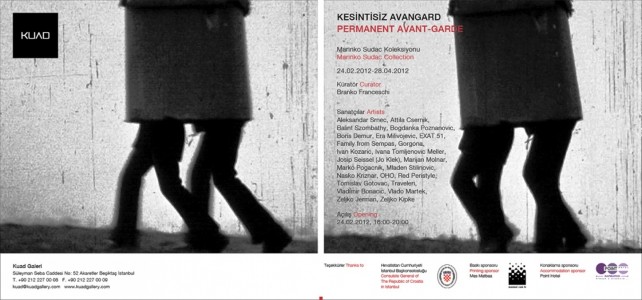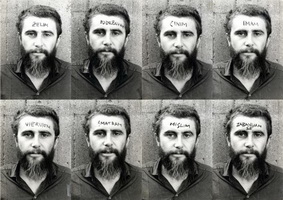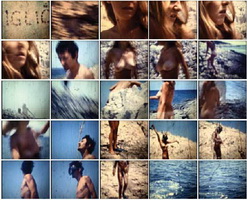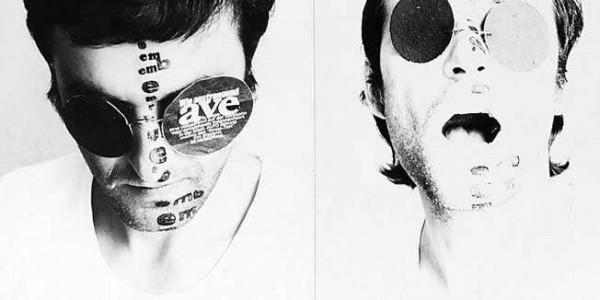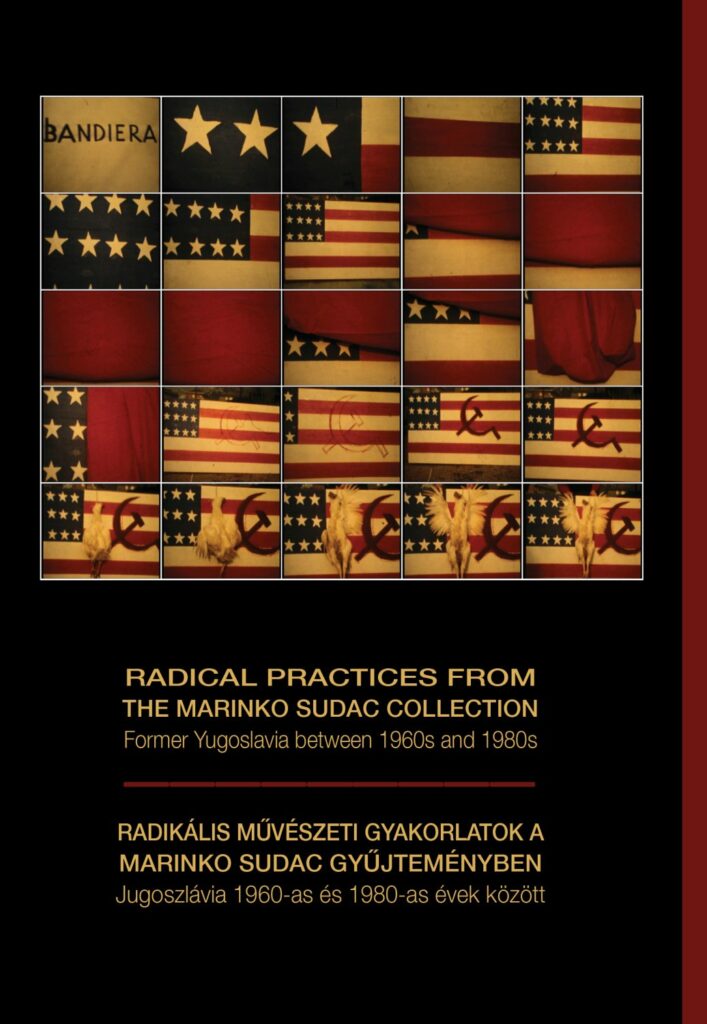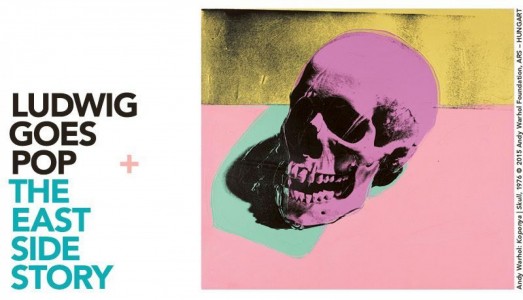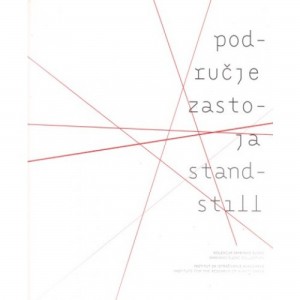OHO
RADOVI
Biografija

Ex Jugoslavija
1968-1989
CHRONOLOGY
1962
Marko Pogačnik carves abstract sculpture into a rock formation, part of a canyon on the river Zarica near Kranj. Zarica becomes a location at which number of OHO Group projects will take place. Pogačnik (under the pseudonym Toska) prepares an exhibition for the foyer of the Prešern Theater in Kranj, including works such as abstract monotypes, drawings and objects.
A group of Kranj’s high school students (Marjan Ciglič, Iztok Geister, and Marko Pogačnik), brought together by interest in abstract and avant-garde art, edit the school magazine "Plamenica/Torch".
1963
“Plamenica/Torch“ is published with materials (experimental texts, abstract drawings) entirely contributed by its editors: Marjan Ciglič, Iztok Geister, and Marko Pogačnik, and an editorial manifesto by Pogačnik. “Plamenica” provokes fierce reactions. The edition is banned; the editorial board of high school students is questioned by the police and the high school director is fired. After the scandal, the editors, backed by the avant-garde oriented individuals Naško Križnar, Rudi Selig, and their collaborator Franci Zagoričnik, form an art group in an attempt to revive the Kranjska art scene. Confronted with strong opposition during the mid-sixties, the group relocates their activities to Ljubljana (aka Kranjska Group).
During the fall, Pogačnik and Geister, who begun their studies in Ljubljana, associate with the group of writers and scholars gathered around the journal "Perspektive/Perspectives", where they publish their first texts. The contributors to the journal were Braco Rotar, Rudi Selig, Tomaž Šalamun, France Zagoričnik and others.
1964
The magazine "Perspectives" is banned, and the editorial board of the magazine "Sodobnost/ Contemporaneity" and its chief editor Dušan Pirjevec, is removed. Contributors to „Perspectives" are forced to find a new platform for publishing. Gradually they begin to gather around the journal "Problems", while the future members of the OHO Group gather around the student weekly "Tribune". Marko Pogačnik develops the technique of impressing objects in clay which are then filled with plaster. These tiles are the first "pop articles (items)”.
1965
Pogačnik inaugurates a solo show at the Prešern Gallery in Kranj. The exhibition presents drawings that express Pogačnik’s specific understanding of modern art, from Impressionism over Surrealism to abstraction, pop products and installations with mirror and plaster sculptures.
Franci Zagoričnik, Naško Križnar and Marko Pogačnik travel to the Istrian village Dajla – the name inspires Zagoričnik to write. The trip results in Zagoričnik’s poetry, Križnar’s films and Pogačnik’s series of drawings.
Pogačnik (under the pseudonym Toska) exhibits drawings from the Dajla series in Prešern Gallery in Kranj. That same summer Pogačnik creates a nearly 40 meters long drawing, on the subject of line and its progression in various forms. Tomaž Šalamun initiated the publication of a book, a type of generation code that expresses the views of the avant-garde oriented generation. Geister and Pogačnik take an editorial job, to be joined by Zagoričnik and Rotar and later Aleš Kermavner. Publication AVA was printed the following year.
At the end of 1965 Aleš Kermavner visits Pogačnik and Geister. He was a leading figure among the group of Ljubljana students together with Milenko Matanović. The Group indulges in "hooligan" behavior (unconventional outfits and behavior, listening to rock music, etc) as an expression of personal dissatisfaction with the consumer society. Kermavner was a poet and philosopher focused on alienation within consumerist and mass society. He also demonstrates affinity towards Reist practice while appropriating Pogačnik’s method of impressing in creation of numerous imprints of Ljubljana’s street ducts.
1966
Pogačnik publishes a manifesto in "Tribuna" (no.13 1965-66) on the establishment of Sintgalerije/Sintgallery: a simple structure that can be placed anywhere where people gather, and enables transfer of art from the gallery into everyday surroundings. This construction is placed at the entrance of the Academy on January, 5th. On this occasion Pogačnik presents his Dajla series, but the exhibition is removed after two days. Later, the structure is moved into the Casino building which hosts students’ actions. Milenko Matanović, among others, exhibit there. Gradually the gallery activities slow down. Aleš Kermavner’s suicide on April, 3, strongly affects his colleagues. His literary legacy is published the same year in the Book of Aleš Kermavner and also features imprints of ducts and other objects. Under the Casino arcades Pogačnik publicly draws posters and comics in protest against the war in Vietnam. Pogačnik and Geister publish the OHO book together with the so-called OHO manifesto, in the "Tribune" (November, 23). The word OHO sums up the eye (oko) and ear (uho) – the organs of Reist concentration and, simultaneously, reflects surprise of the unexpected discovery of reality.
Numerous books and other publications that followed were also named OHO, and at the end, it also became the name of the group. OHO editions include the following publications:
1966
Marko Pogačnik: Artikel knjiga (Item Book)
I.G. Plamen and Marko Pogačnik:OHO
1967
(“Topografic series”:)
I.G. Plamen: Embrionalna knjiga (Embryionic book)
I.G. Plamen: Zvočna knjiga (Sound Book)
F. Zagoričnik: Opus nič (Opus Zero)
M. Hanžek: Štiri pesni (Four Poems)
M. Hanžek: Prostorska knjiga (Spatial Book)
M. Matanović: Vizualne gramafonske plošče (Visual Gramophone Records)
M. Pogačnik:Knjiga z obročkom ( Book with a Ring)
I.G. Plamen : Dve pesmi ( Two Poems)
N. Križnar, M. Matanović i I. Plamen: Pesem, ki ne razlikuje vojne od miru, – Beseda je meso postala (A Song Which Does Not Distinguish War from Peace – The Word Becomes Flesh), tape recording with two songs
1968
G. Plamen i M. Pogačnik: Gobe v knjigi (Mushrooms in Book)
I.G. Plamen i M. Pogačnik: Pegam in Lambergar (Pegam and Lambregar)
M Pogačnik: Machbox Labels
Tomaž Šalamun: Namen pelerine (A Scope of Cape)
“Series of Boxes”:
I.G. Plamen i M. Pogačnik: 9 cards
M Pogačnik: Muha (The Fly)
M Hanžek: 12 cards
M. Matanović: Off-prints
Deja Rotar: 18 cards
1969
Matijaž Hanžek: Delitev množitev (Dividing Multiplying)
Pogačnik was intended to participate in a group exhibition at Prešernov Dom, but his work was removed before the exhibition’s opening. As a result, Pogačnik decides to replace his work with himself in the exhibition. This action was for him not only a protest, but also a method of using his own body as an artistic medium. On December, 29, in the Casino building – that housed the student committee offices, the weekly "Tribune" and other newspapers’ editorial boards – Pogačnik organizes a happening: participants gather and produce sounds using different surfaces and objects in the room. The happening was advertised in the "Tribune" (No. 10, 1966-67).
1967
Rijeka’s magazine „La Battana” publishes an article on Slovenian avant-garde art. A text by Taras Kermauner depicts works by Šalamun, Zagoričnik, Geister, Pogačnik and Matanovic. In April the same year, Vojin Kovač-Chubby walks the streets of Ljubljana in pajamas, an action documented by "Tribuna". Members of the OHO begin to negotiate with the management of Škofja Loka Museum to open an avant-garde art gallery in the museum’s basement.
Publication Pericarežaracirep (a palindrome, i.e. a word that can be read from right to left as well as from left to right and remains the same) edited by Pogačnik and Geister was completed in October. Collaborators are Aleš Kermavner, Marko Pogačnik, Tomaž Šalamun, Franci Zagoričnik, Iztok Geister, Milenko Matanovic, Vojin Kovač-Chubby, Matjaž Hanžek and Slavoj Žižek. A large part of the publication features Reist and concrete poetry. Pogačnik publishes his articles and texts entitled Frolich-Moscon, while Geister and Žižek publish essays. The publication is released in 1969 as the sixth volume of Znamenja / Signs Editions. In November, Geister and Pogačnik complete their Ikebana book and publish it as the eighth volume of the Znamenja Editions.
1968
The first exhibition of the OHO Group is presented at the Museum of Modern Art in Ljubljana (February,13 – 22) as part of the Atelier 68 Series, and includs works by Šalamun, Matanovic and Pogačnik. Tomaž Brejc publishes a pamphlet for the occasion.
In March, a somewhat extended version of exhibition is transferred to Rotovž Salon (Salon of City Hall) in Maribor.
Maribor’s publishing house Obzorje / Horizon begins to publish the "Znamenje / Signs" magazine edited by Dusan Pirjevec with Marko Pogačnik as graphic editor. Over several years, Znamenje publishes a large number of publications on Slovenian modernism, including avant-garde books and essays, and several books by OHO and by authors close to them.
Between April, 13 – 30, OHO exhibits at the Student Center Gallery in Zagreb, featuring works and visual poetry by Chubby Kovač, Ciglič, Dragan, Hanžek, Križnar, Matanovic, Geister, Pogačnik and Šalamun. The opening includes a lecture and six-part happening. David Nez becomes a member of OHO. Matanovic and Nez present objects at the Objects and Colors exhibition at the Gallery Center in Zagreb. Matanović and Nez participate in the Festival of concrete poetry in Fiumalbou. The Katalog / Catalog Group is established in June. The members are: Tomaz Brajc, Nadežda Čaćinović, Iztok Geister, Lado Kralj, Milenko Matanovic, Rastko and Zoja Močnik, David Nez, Marko Pogačnik, Jani Razpotnik, Braco Rotar, Andraž and Tomaž Šalamun, Rudi Šeligo, Marko Švabić and Slavoj Žižek. The group intends to start a magazine, "Catalogue", to function as a forum for new tendencies in art and theory (i.e,. concrete and visual poetry, Reism, programmatic art, structuralism, semiotics, post-structuralism and similar trends). Due to the lack of adequate support, the group publishes it work instead in the magazine "Problemi/Problems", which brings together different generations with different views. Since the members of OHO are also part of the Catalog Group, both groups occasionally work together, but OHO maintains its distinct identity.
The first issue of the "Catalogue" is published as a special issue of "Problemi" (no. 68-69), and provokes numerous attacks by traditionally oriented audience and politicians. The next issue is published in 1969, as an edition of Znamenja. During the summer, members of the OHO perform several happenings and actions in Zvezda / Star Park. Members of the OHO-Catalogue Groups (Ciglič, Dragan, Geister, Hanžek, Kovač-Chubby, Križnar, Matanovic, Nez, Pogačnik, Šalamun and Zagoričnik) exhibit in Atelje 212 Theatre as the part of the Theatre Festival BITEF. On September, 25, a happening The Passion is organized thanks to the collaboration of Tomaž Brejc, Zvone Ciglič and Tomaz Šalamun. This OHO event is documented in the Gallery 212 publication, Beograd, 1968. (P. 23-31, texts by Tomaž Brejc, Biljana Tomić and Braco Rotar).
The exhibition Permanent Art is curated by Biljana Tomić for Atelje 212, with participation by Brejc, Ciglič, Hanžek, Smith-Chubby, Križnar, Matanovic, Nez, Geister, Pogačnik, Tomaž and Andraž Šalamun and Zgoričnik. In the winter of 1968 – 69 Srećo Dragan, Matanovic, Nez, Drago Dellabernardina and Križnar engage in photo-projects and various activities. Tomaž Šalamun joins the OHO artists and begins to collaborate on projects. On December, 30, Dellabernardina, Nez and Matanović use their bodies to create the famous Mt. Triglav sculpture in Zvezda Park.
1969
Thanks to the initiative of Tomaž Šalamun, OHO members Matanovic, Andraž and Tomaž Šalamun prepare an exhibition for the Contemporary Art Gallery in Zagreb. The exhibition is entitled Pradedje / Ancestors and marks a turning point in the OHO’s oeuvre. From that moment forward, art practice is oriented toward the prevailing of art objects over context specific and diverse types of activities. Additionally, the exhibition affirms contemporary art trends, above all, Arte Povera. The accompanying catalog includes photo documentation of Tomaž Šalamun, Milenko Matanovic, Tomaž Brejc and Braco Rotar.
After returning from military service Marko Pogačnik re-unites OHO. In March and April, OHO exhibits at the Museum of Modern Art in Ljubljana (in the Studio 69 series) and in Prešernov Dom in Kranj. Matanović, Nez, and A. Šalamun first exhibit in Ljubljana on March, 26, followed by Pogačnik and Srečo Dragan on April, 4. Tomaž Šalamun’s exhibition opens on April, 2 only to close the next day.
Drago Dellabernardina exhibits pop art and conceptual works at the House of Culture in Postojna between April, 21 – May, 5. The first issue of the Belgrade magazine "Rock” features a detailed overview of the OHO Group’s activities. Iztok Geister, Rastko Močnik and Marko Pogačnik edit a special issue of "Problemi" magazine entitled "PU", dedicated to program art. The summer months result in "Summer Project", which bring OHO members and their activities to open air sites in Ljubljana and its natural surroundings, Krka river canyon in Kranj, river Zarica Canyon near Drulovke, Sorško field near Kranj and Meja, as well as the island Srakane near Mali Losinj.
Pogačnik and Zagoričnik participate in the Co/incidenze Exhibition in Massari (September, 13 – 28). Documentation recording of the Summer Projects is gathered for a special catalogue. Between November, 20 – December, 9, OHO Group exhibits at the Youth Center in Belgrade enabling each participating artist to control gallery content for a few days. The exhibition is documented by a catalogue presenting all the projects and accompanied by essays by Pavle Stefanovic and Jerko Denegri.
During the BITEF Theater Festival OHO performs Urban Theater Happening i.e. Whistle Happening on the streets of Belgrade, after which it is reenacted in Ljubljana. The next happening performed in Belgrade is Programmatic Theatre. The second issue of Catalog is published in Znamenja Editions, featuring fiction by Rudi Selig, Dimitrij Rupel and Marko Švabić, poetry and foto-projects by Tomaž Šalamun, poetry by I.G. Plamen and Matijaž Hanžek, programmatic and concrete literature by Pogačnik and Zagoričnik, Braco Rotar’s studies on the art of David Nez, drawings of cannons and photo documentation on David Nez, projects by A. Šalamun, Matanovic, Dragan and Dellabernardina, as well as exhibitions and projects by OHO Group.
1970
Kynaston McShyne invites the OHO Group to participate in the Information exhibition. In February, Nez and Matanović travel to New York and start working on their first telepathic project. In Apri, thel OHO Group exhibits in Techné Gallery in Florence. Work on telepathic projects continue.
During March, April and May, the project Zarica develops near Kranj. In May, the exhibition at Đuro Đaković Gallery in Sarajevo opens. The same month, the Information exhibition opens in MoMA, New York. The OHO Group’s oeuvre is presented through documentation and Križnar’s films. Tomaž Šalamun traveles to New York. In June, the OHO group performs at the 4th Belgrade Triennial of Contemporary Art, and presents its visual poetry.
Summer: the Group’s "šolanje" (education) takes place in Zarica, Sorško field and Čezsoči, and in August they are visited by Walter de Maria who collaborates on the night project.
September: the OHO Group works and exhibits at Aktionsraum in Munich.
November: the OHO Group prepares an exhibition for the Ljubljana City Gallery. During the exhibition OHO members decide to leave the world of art and return to real life. This is the last exhibition of the group. The group begins collaboration with the architect Niko Lehrman on a draft design and its solar sculptures for Hotel Agronavi in Nova Gorica.
1971
On April, 11, OHO members and their friends move to an abandoned house in Šempas village and found the Family of Šempas , a community aiming to live in harmony with nature and itself. This project is presented at numerous national and international exhibitions. Despite proclaimed withdrawal from the world of art and new devotion to real living, the OHO members still occasionally exhibit, for instance: 7th Biennale of Young Artists in Paris on April, 23, the famous At the Moment Exhibition curated by Nena and Braco Dimitrijevic, a one-day exhibition held in the vestibule of Frankopanska 2a in Zagreb (other artists: Anselmo, Barry, Brown, Burren, Burgin, Dibbets, Dimitrijevic, Group ER, Flanagan, Huebler, Group KOD, Kirill, Kounellis, Latham, LeWitt, Trbuljak, Weiner and Wilson); and Cases of Conceptual Art in Yugoslavia (a part of the Salon of the Museum of Modern Art in Belgrade) curated by Ješa Denegri. Over the next few years, documentation of the OHO Group is presented in numerous exhibitions. A special overview of the OHO Group’s activities is organized in 1978 at ŠKUC Gallery in Ljubljana, on the occasion of the publication of the catalog containing an essay by Tomaž Brejc.
The basis of this chronology is a summary of the OHO Group’s activities as prepared by Dr. Tomaz Brejc for the OHO 1966 – 1971 exhibition catalog, Ljubljana 1978.
This chronology was taken from the catalog of the OHO Group retrospective exhibition at the Modern Gallery, Ljubljana 1994
From 1966 onward, Naško Križnar and Marjan Ciglič make short experimental films which often involve other OHO Group members. Križnar records the rich documentation of the Group’s campaigns and projects. Over the next few years, Geister, Matanović, Nez, Pogačnik and others join in their film-making.
List of OHO films:
1964
Križnar: Nadstavba (Superstructure), 8 mm, b/w, 1 min.55 sec (plays: Marko Pogačnik)
1965
Križnar: Na poti za Dajlo (On the Road for Dajla), 8 mm, b/w, 9
1966
Križnar: Zurigo, 8 mm, b/w, 9 (Bogdan Gradišnik, A. Kermavner, M. Matanović)
Križnar: Eve of Destruction, 8 mm, b/w 2,39 (M. Pogačnik)
Križnar: Devetnajsti živčani slom (Nineteenth Nervous Breakdown), 8mm, b/w, 2, 39 (Marinka Ciglič, M. Pogačnik)
Križnar: Konice špic (The Nib of Points), 16mm, c/b, 7, 41 (Pogačnik, Gesister, Anže Mezeg)
Križnar: Morgue, 8 mm, b/w, 3, 08 (I. Geisner)
Križnar: Samomorilec (Suicide), 8 mm, b/w, 2, 34 (B. Gradišnik)
Ciglič: Val mezonov v potencialnem loncu (Vawe of Mensons in a Potential Pot)
1967
Križnar: Lego, 8 mm, col., 3, 23
Kovač- Chubby- Križnar: Lepo je v naši domovini biti mlad (It is Nice to be Young in Our Country), 8 mm, b/w, 3, 19 (M. Hanžek)
Križnar: Žalik žena (Nymph) 16 mm, b/w, 3, 50
Križnar: Delagubantskilimez, 8 mm, b/w, 2,56 (M. Matanović, M Hanžek)
Hanžek- Križnar: Nomama, 8 mm, b/w, 1,40
Geister- Križnar: Interes, (Interest), 8 mm, b/w, 6, 05 (Chubby, Geister, Ciglič)
Geister: Čakajoč na Godota (Waiting for Godot), 8 mm, b/w, 2, 12
Pogačnik: Oko, (Eye)16 mm, b/w and col. anim., 3, 31
Ciglič: Fulia Quanso`, 8 mm, col., 7
Ciglič: Sinkope, 8 mm b/w, 3, 30
Ciglič: Ofelija je opet nora (Ophelia is Crazy Again),
1968
Križnar: Športni tip, (Sport Type) 8 mm, b/w, 2, 20 (M. Hanžek)
Križnar: Film in avtor se ljubita (The Film and The Author Make Love), 8 mm, b/w, 3, 31 ( Chubby, Matanović, Nez)
Križnar: Hrbet gre v kino (Te Back Goes to Cinema), 8 mm, b/w, 0, 54 (M. Čermelj)
Križnar: Sranje, (Bullshit), 8 mm, b/W, 3, 50 (Manca Čermelj, V. K. Chubby)
Matanović-Križnar: Dok. film,(A Doc. Film) 8 mm, b/w, 4, 11
Pogačnik: Svitanje (Daybreak) 8 mm, b/w, anim., 3, 30
Nez: Žogica (The Ball), 8 mm, b/w, 4, 02
Nez: 4 x 30 sekund teme (4 x 30 Seconds of Darkness), 8 m, b/w, 2
Ciglič: NLP, 8 mm, b/w, 3
1969-70
Križnar: Film o filmu (Film About Film) 8 mm, col., 1, 21
Križnar: Pojekt 1: Prižgite luč ( Project 1 – Switch on the Light), 8 mm, b/w, 1, 17
Križnar: Projekt 2 ,(Project 2) 8 mm, b/w
Križnar: Projekt 3- Umivanje avta- (Project 3 – Car Wash), 8 mm, b/w, 0, 40
Križnar: Projekt 6- Transport gume, (Project 4- The Transport of the Tyre) 8 mm, col., 3, 50 (Matanović, Nez, Šalamun)
Križnar: Projekt 7- Vaja s piščalko( Project 7- Action with the Whistle), 8 mm, b/w, 5, 51
Ciglič: Ajra, 8 mm, b/W, 3
Ciglič:OU
1970
Križnar: Beli ljudje ( White People), 35 mm, b/w, 324 m, Neoplanta film, Novi Sad
Križnar: Projekt kamera (Project Camera), 35 mm, b/w, 243 m, Viba film, Ljubljana
Projekti u kojima su izlagani radovi
umjetnički utjecaji
OHO utjecao je na:
Ex Jugoslavija
1968-1989
Ex Jugoslavija
1968-1989
Ex Jugoslavija
1968-1989
Ex Jugoslavija
1968-1989
Ex Jugoslavija
1968-1989
Ex Jugoslavija
1968-1989
Ex Jugoslavija
1968-1989
Ex Jugoslavija
1968-1989
Ex Jugoslavija
1968-1989
Ex Jugoslavija
1968-1989
Ex Jugoslavija
1968-1989
Ex Jugoslavija
1968-1989
Ex Jugoslavija
1968-1989
Ex Jugoslavija
1968-1989
Ex Jugoslavija
1968-1989
Ex Jugoslavija
1968-1989
Ex Jugoslavija
1968-1989
Ex Jugoslavija
1968-1989
Ex Jugoslavija
1968-1989
Ex Jugoslavija
1968-1989
Ex Jugoslavija
1968-1989
Ex Jugoslavija
1968-1989
Ex Jugoslavija
1968-1989
Ex Jugoslavija
1968-1989
Na OHO utjecali su:
Ex Jugoslavija
1915-1946
Ex Jugoslavija
1968-1989
Ex Jugoslavija
1968-1989
Ex Jugoslavija
1968-1989
Ex Jugoslavija
1968-1989
Ex Jugoslavija
1968-1989
Ex Jugoslavija
1968-1989
Ex Jugoslavija
1968-1989
Ex Jugoslavija
1946-1968
Ex Jugoslavija
1915-1946
Ex Jugoslavija
1968-1989
Ex Jugoslavija
1968-1989
Ex Jugoslavija
1968-1989
Ex Jugoslavija
1968-1989
Ex Jugoslavija
1968-1989
Ex Jugoslavija
1968-1989
Ex Jugoslavija
1968-1989
Ex Jugoslavija
1968-1989

